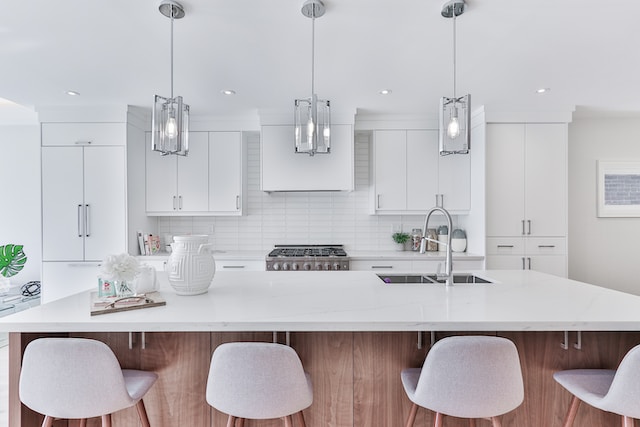Kitchen Worktops: Which One is Right For Your Kitchen?
Whatever type of worktop surface you need for your kitchen—from something hygienic and durable to something cost-effective—there is sure to be kitchen worktops available that meets all these criteria. But with such a range of choices available, it may be hard to decide on the ideal option for your needs.
Marble makes an exquisite statement and is often featured in luxury kitchens. Not only is it beautiful to look at, but its cooling touch and antibacterial properties make it the perfect material to restore shine and keep bacteria at bay. Plus, buffing it can restore its gleam.

Laminate
Laminate worktops offer an economical option for contemporary kitchens. Not only are they waterproof and non-porous, making them more hygienic, but they’re also extremely hardwearing and come in an array of styles, colours, and finishes that accurately replicate stone, wood, and stainless steel surfaces.
Laminate flooring can be tailored to fit any shape or size kitchen, including apertures for sinks and hobs. Installation and upkeep are very straightforward; simply wipe down with household cleaner and use as normal! Laminate is generally heat-resistant but should be protected against direct contact from hot pans for too long, as this could scorch it over time.
As they’re relatively inexpensive and can be replaced easily if damaged, laminate surfaces make for an economical and versatile choice that makes sense in busy family households. They do not require sealing and don’t stain easily like stone and wooden surfaces do, and unlike wooden surfaces, they aren’t susceptible to staining either! Nonetheless, when storing kitchen utensils on the worktop, be wary around sharp objects like knives as this surface does scratch. This option is excellent.
Solid Wood
Wood adds warmth and natural charm to a kitchen, boasting striking shades and grain styles unique to every worktop. However, it can stain or scratch easily and requires regular maintenance; an easier, cost-cutting solution would be a man-made composite worktop such as quartz or Corian, which combines natural minerals with acrylic resins for heat resistance and stain resistance.
Oak is an attractive hardwood choice, boasting distinctive marks and colour variations across its grain. Oak barrels often use this material as the worktop on which to age whisky and wine. Iroko or walnut also offer straight, regular grain patterns, while sapele offers its distinctive striped patterns. As with all hardwood kitchen worktops, Danish oil must be regularly applied to keep these looking their best; making sure you have access to appropriate tools, safety equipment, training, or hiring a professional fitter is recommended when installing them yourself.
Bamboo
Bamboo kitchen worktops and cabinet fronts add an earthy, textural aesthetic to the kitchen, made from sustainable Moso bamboo that grows quickly without hindering future growth, unlike harvesting trees.
Bamboo countertops are created by weaving bamboo strips together using adhesive and pressure, similar to how plywood-type countertops are woven. Bamboo can also be laminated together for an alternative finish that resembles solid wood with an increased Janka hardness rating compared to many types of hardwood.
Bamboo countertops can become scratched easily and should be regularly oiled to maintain their beauty. Natural oils like linseed or Tung oil that are safe for food contact are best. As bamboo isn’t heatproof, hot pots and pans could scorch its surface and leave permanent damage behind. To address this, consider investing in a protective PU coating designed specifically for kitchen use.
Granite
Granite is a timeless choice when it comes to choosing natural materials for their kitchen, offering striking aesthetics and long-term durability.
As with other natural stones, granite countertops are quarried from the earth, and no two slabs look exactly the same due to the inclusion of minerals that create unique colours and patterns in each slab.
Brown granites, such as Venetian Gold, are cosy, warm stones that pair beautifully with wood kitchen furniture. Inclusions could include creams, honeys, ambers, reds, greys, and blacks for an attractive mix.
Grey granites are highly adaptable and work with most cabinet colours. Some feature soft, smoky tones while others boast strong veining; New Caledonia is one such popular granite with subtle mottling at first glance but more visual interest when up close.
Granite differs from quartz in that it contains uranium and thorium that can decay into radon, according to EPA recommendations for testing and mitigating high levels of radon in homes; however, it’s unlikely that granite countertops would increase annual radiation doses above their natural background level.

